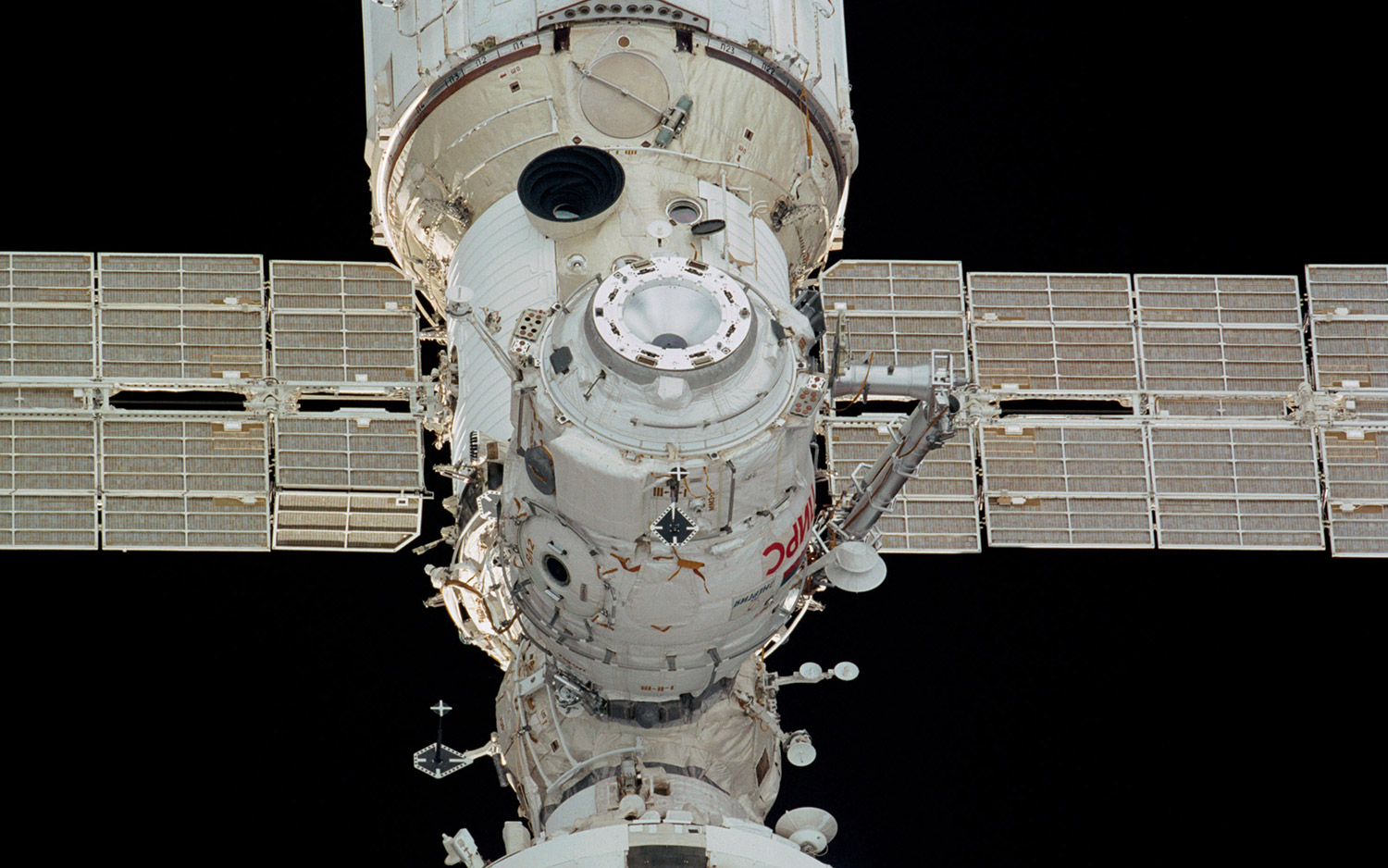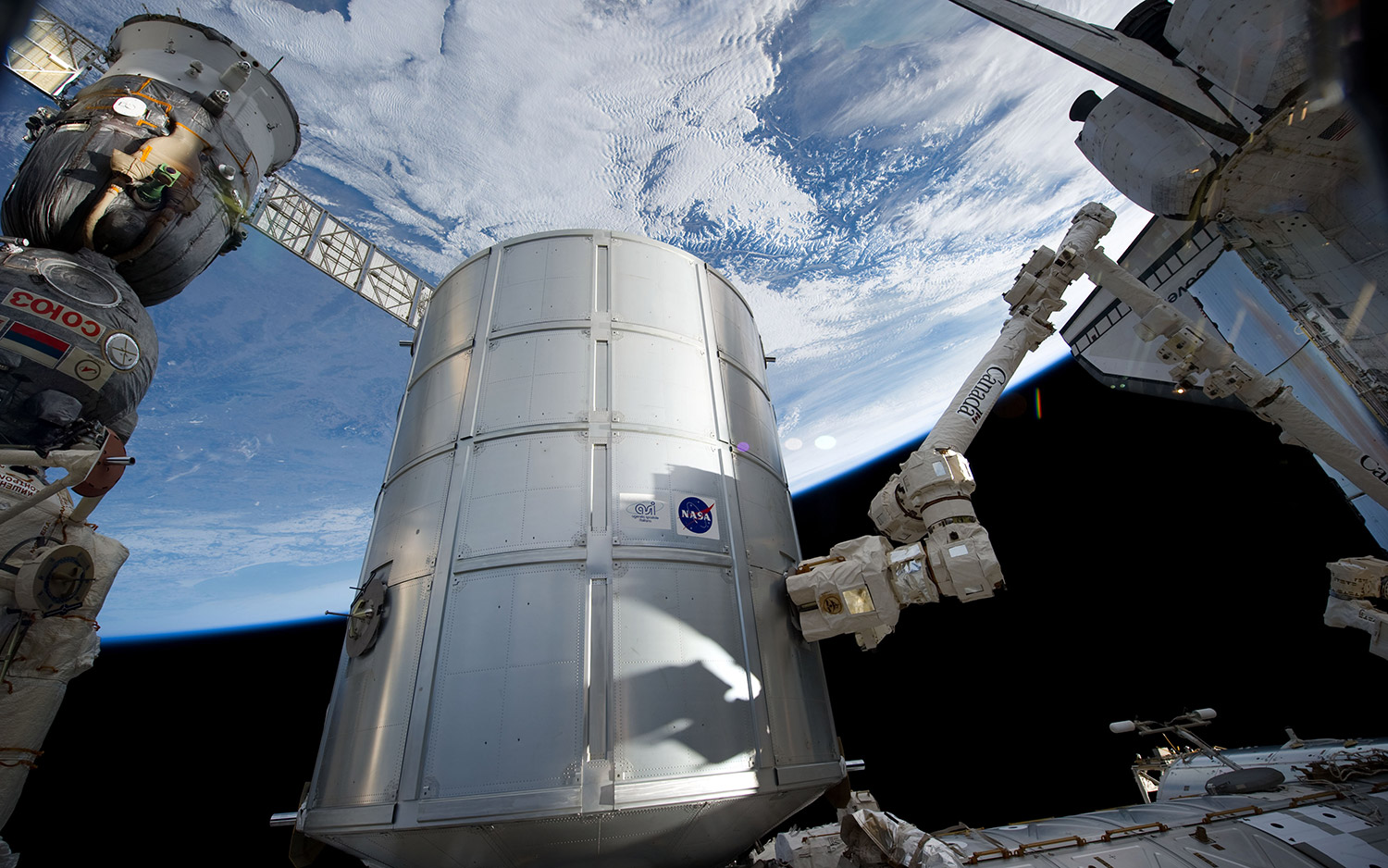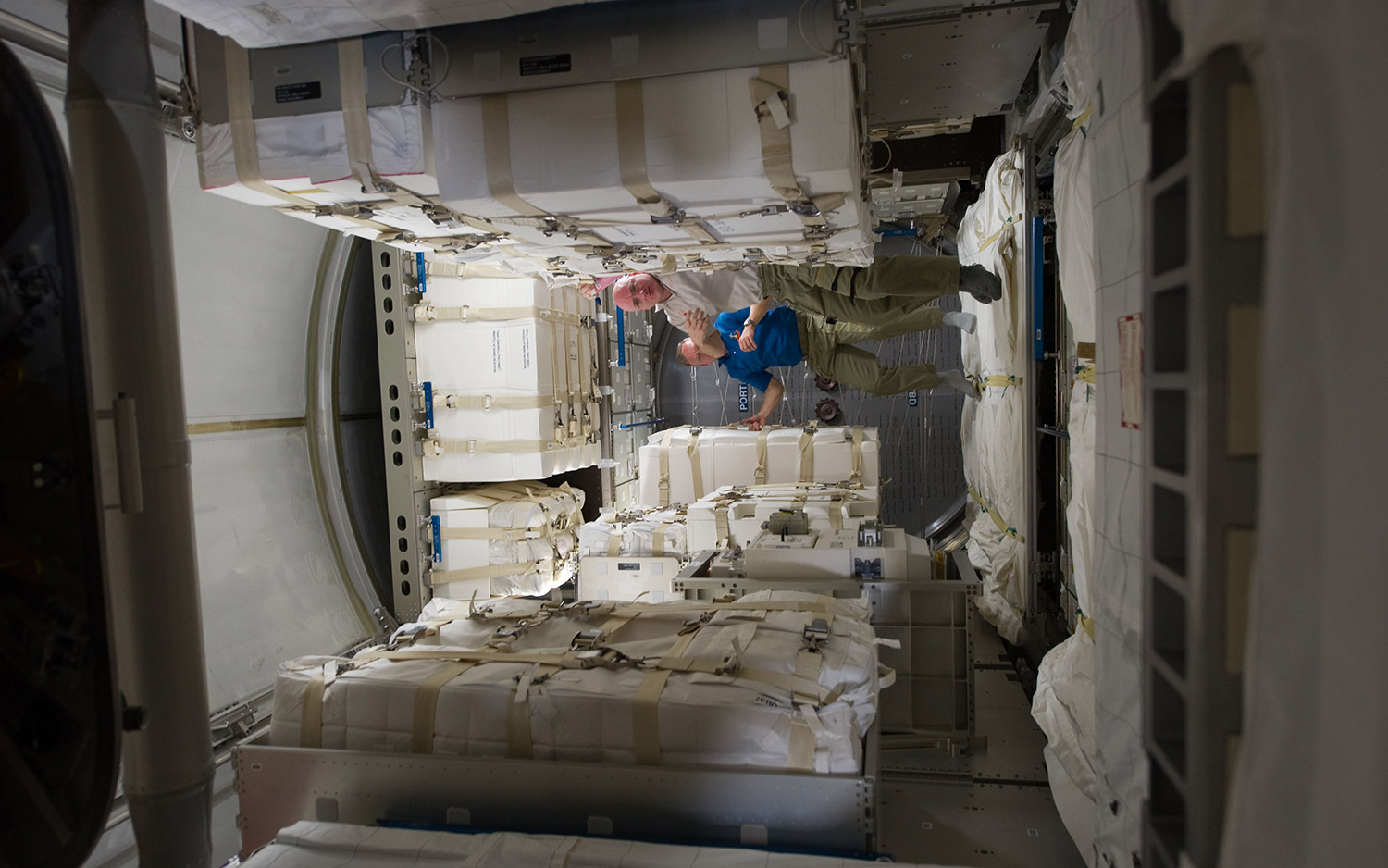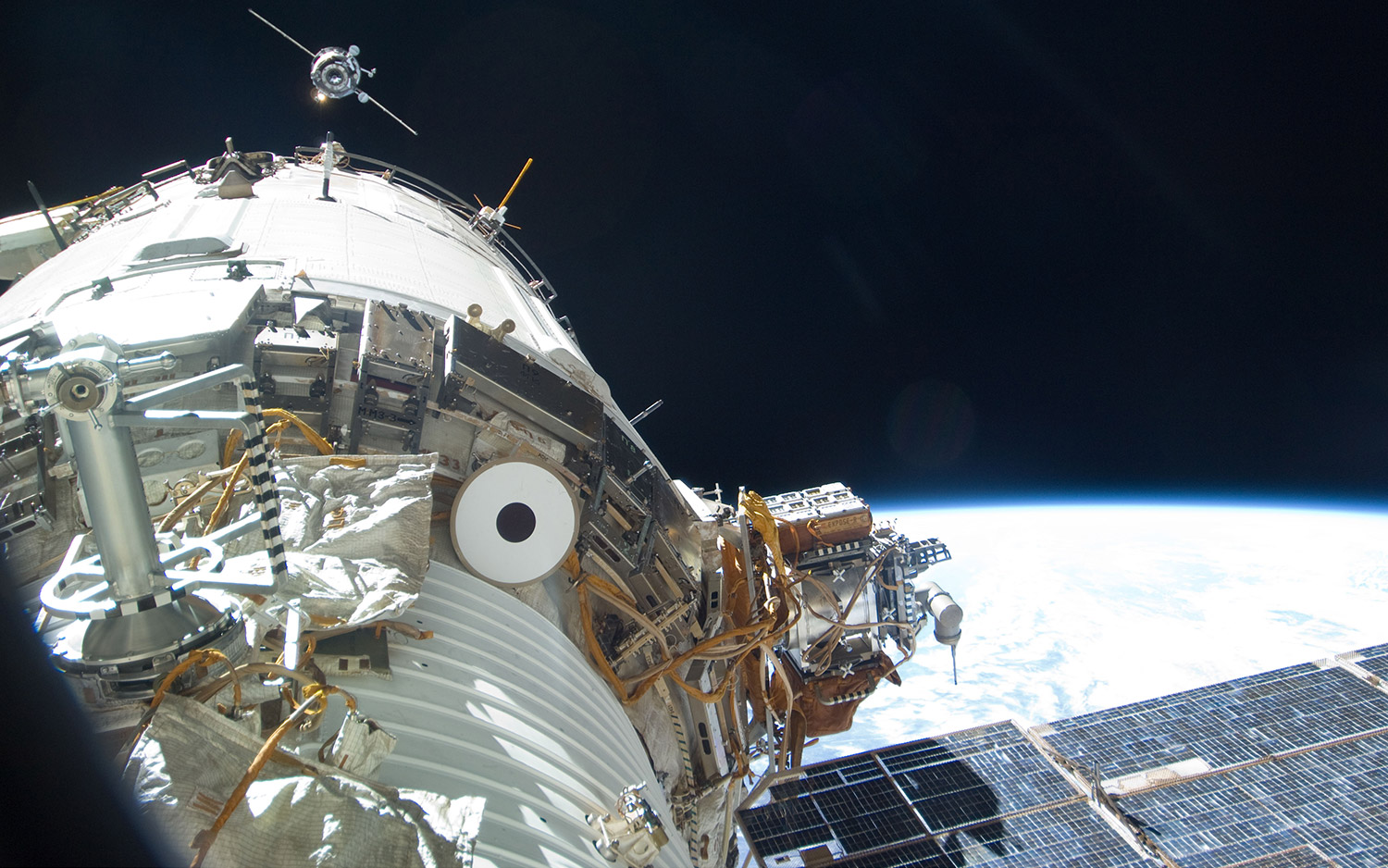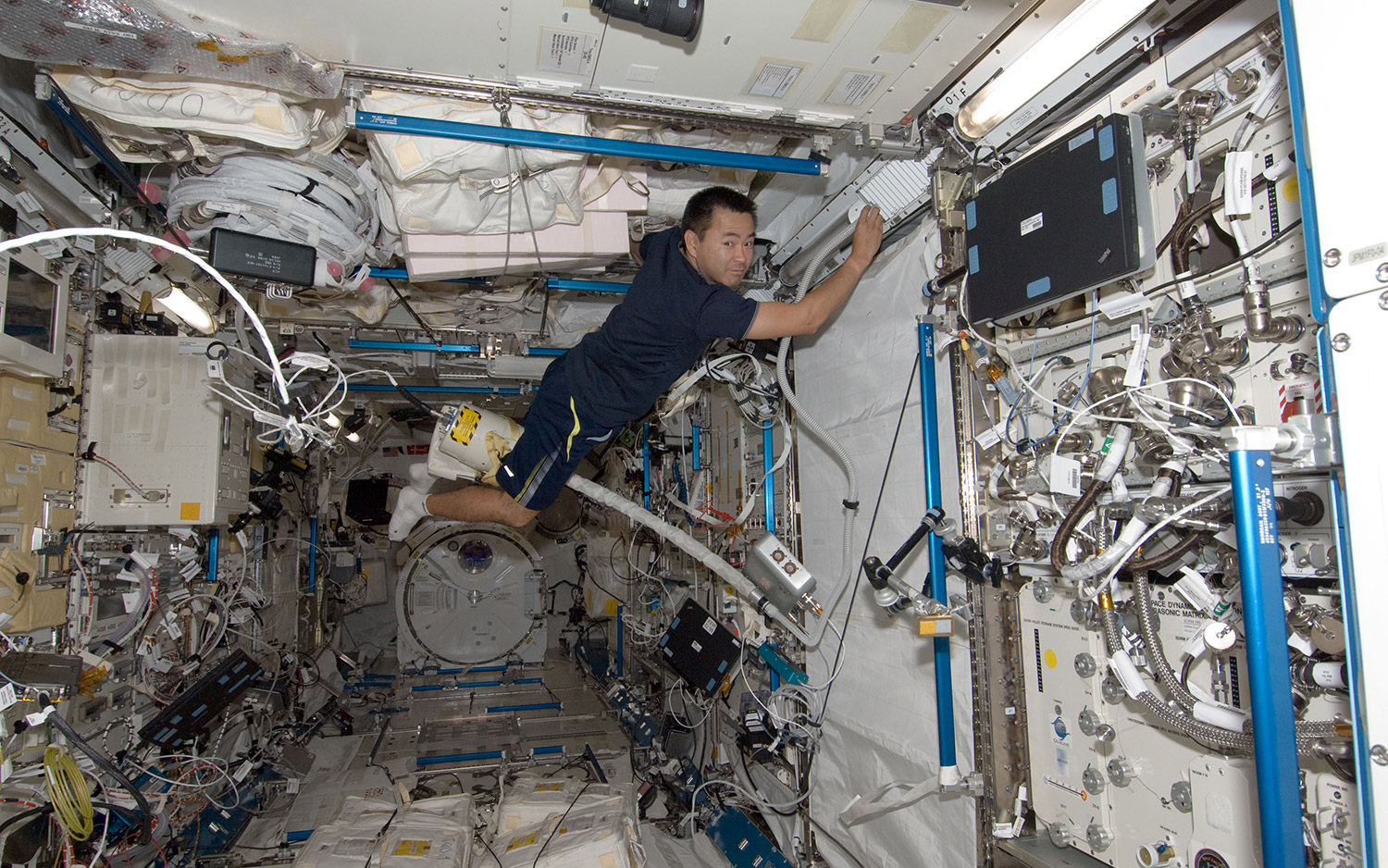International Space Station at 20: A Photo Tour
Quest
The U.S. Joint Quest Airlock is the primary departure point for astronauts wearing U.S. spacesuits to do spacewalks, although the airlock can also support crew members wearing the Russian Orlan spacesuit. The airlock also has an equipment lock that allow for suit maintenance and refurbishment, according to NASA. So it's through this hatchway that many astronauts get to experience the wonders of space, protected by nothing more than a spacesuit. Quest launched in July 2001 aboard space shuttle Atlantis, during mission STS-104.
Interior of Quest
The interior of Quest can get crowded with two crewmembers inside U.S. spacesuits, but it's a nice open space if you're just working inside in shirtsleeves. Pictured here is U.S. astronaut Peggy Whitson during Expedition 5 in 2002. Whitson did multiple tours of duty on the station and is the American astronaut with the most accumulated time in space.
Poisk
Russia's Poisk, also known as the Mini-Research Module 2, has a port for the Russian Soyuz and Progress modules to dock to the space station. Spacewalkers using Russian Orlan spacesuits can prepare for work inside this module, NASA says. Poisk also offers more space for scientific experiments, as well as more power supply outlets. It has workstations both inside and outside for science investigations. Poisk launched aboard a Progress cargo ship in November 2009.
Poisk interior
Poisk is a popular entry and exit point for astronauts going to and from Earth on their missions. Here, NASA astronaut Steve Swanson (who commanded Expedition 40) waves goodbye to the camera on Sept. 10, 2014, before going into the Soyuz spacecraft for his return back to Earth with Russian cosmonauts Alexander Skvortsov and Oleg Artemyev.
Pirs
The Russian Pirs Docking Compartment is useful not only for docking spacecraft, but also for performing spacewalks. Crew members using the Russian Orlan spacesuit use the airlock here to exit the space station. It also has a docking port for transport and cargo vehicles to the station, according to NASA. Pirs is even a fuel transfer station, moving fuel between the Zvezda and Zarya modules or between docked vehicles.
Interior of Pirs
While it's tight quarters inside of Pirs with spacesuits and crew members, the chance to go "outside" the space station is often a highlight of astronaut and cosmonaut missions. Here, in August 2004, members of Expedition 4 pose with their Russian Orlan spacesuits inside of Pirs. At left is Russian cosmonaut Gennady Padalka, and at right is NASA astronaut Mike Fincke.
Permanent Multipurpose Module
The European Permanent Multipurpose Module actually travelled back and forth to space several times in a previous iteration, called the Leonardo Multipurpose Logistics Module (MPLM). The PMM went into space to stay on Feb. 24, 2011 during STS-133, on space shuttle discovery. Its arrival gave astronauts nearly 2,500 cubic feet for storage and science experiments — including space for 16 racks of equipment, experiments and supplies, according to NASA.
Breaking space news, the latest updates on rocket launches, skywatching events and more!
Interior of Permanent Multipurpose Module
This older picture of the Permanent Multipurpose Module (taken in March 2011) shows what it used to look like before it was crammed with scientific experiments and other equipment. Pictured here are Expedition 26 commander and NASA astronaut Scott Kelly (foreground) and Steve Lindsey, commander of space shuttle mission STS-133, which brought the PMM to the station.
Zvezda
Zvezda is the first fully Russian contribution to the space station, according to NASA, and in the early days it was an essential part of human missions. It launched on July 12, 2000 aboard a Russian Proton rocket. Today the module not only offers living space, but it also provides essential elements such as life support, electrical power and flight control. It also has a docking port for Russian cargo spacecraft (the Progress) as well as Russian Soyuz spacecraft that carry up astronauts and cosmonauts.
Interior of Kibo
Kibo has plenty of space for science work, as shown in this 2012 picture. In the image is Japan Aerospace Exploration Agency astronaut Aki Hoshide, a flight engineer aboard Expedition 32. Here he is vacuuming as part of routine maintenance operations on the space station. Astronauts need to balance time maintaining the station with time performing science experiments, as both activities are required to ensure the space station performs its function of off-Earth research.

Elizabeth Howell (she/her), Ph.D., was a staff writer in the spaceflight channel between 2022 and 2024 specializing in Canadian space news. She was contributing writer for Space.com for 10 years from 2012 to 2024. Elizabeth's reporting includes multiple exclusives with the White House, leading world coverage about a lost-and-found space tomato on the International Space Station, witnessing five human spaceflight launches on two continents, flying parabolic, working inside a spacesuit, and participating in a simulated Mars mission. Her latest book, "Why Am I Taller?" (ECW Press, 2022) is co-written with astronaut Dave Williams.




